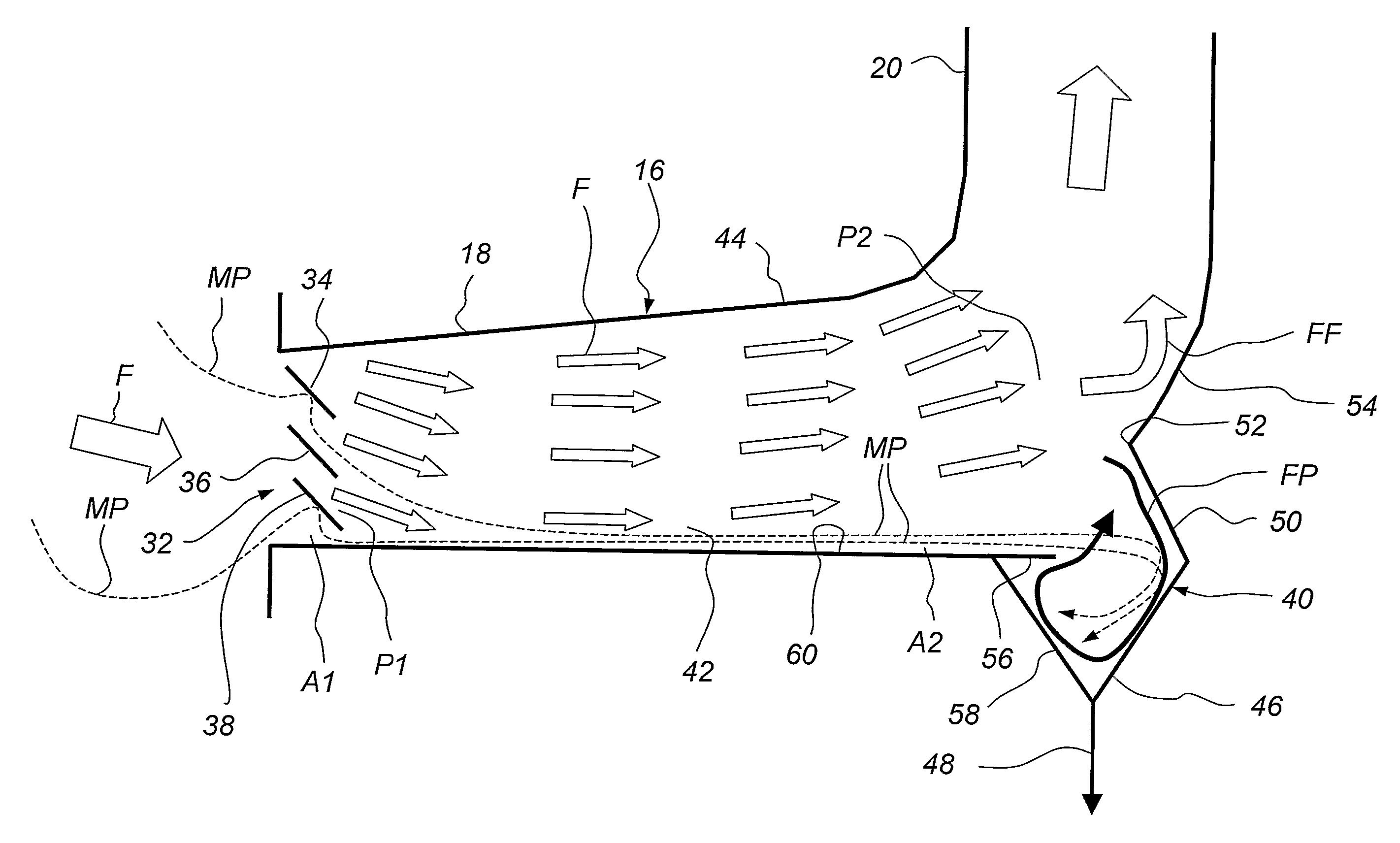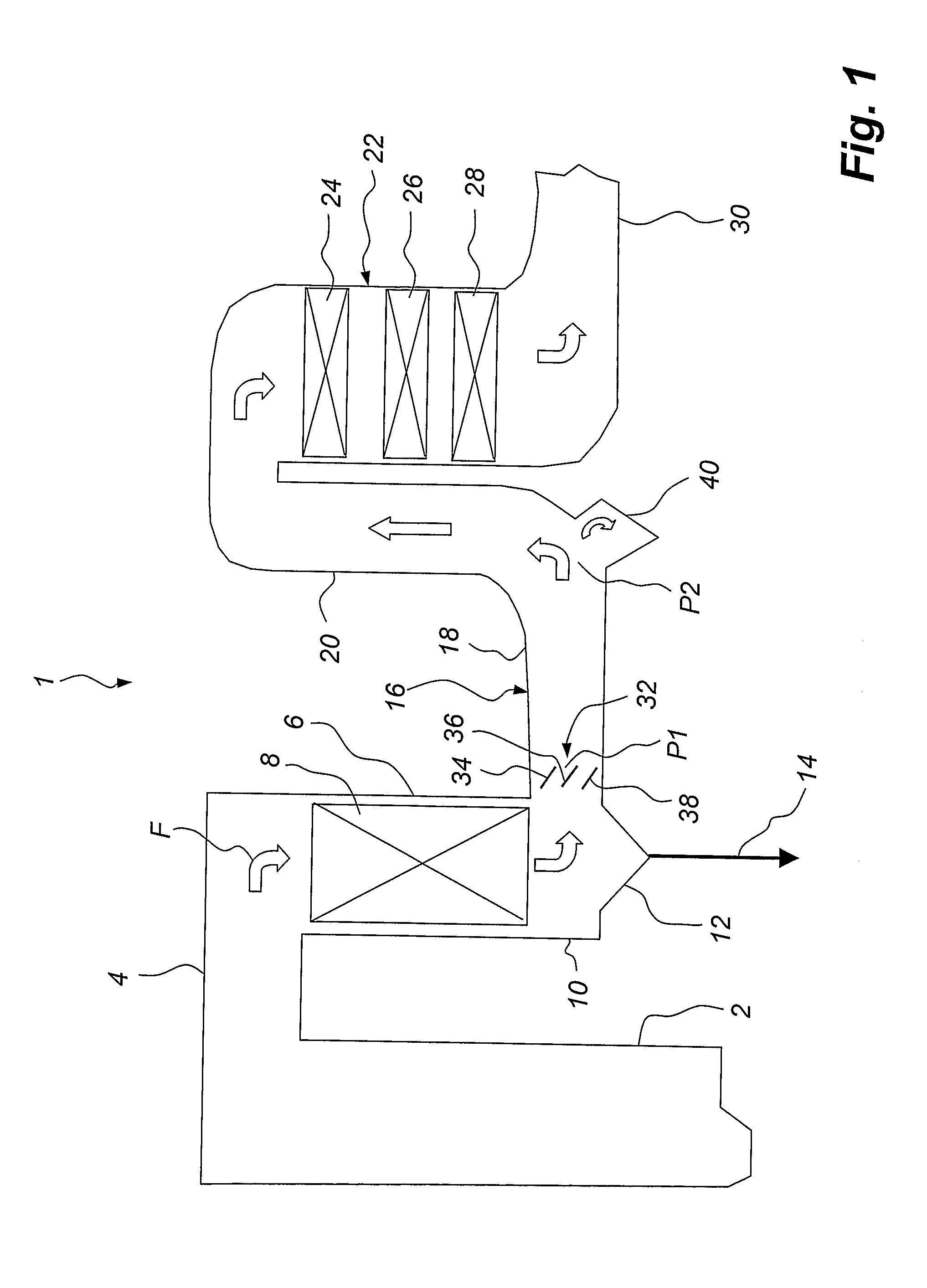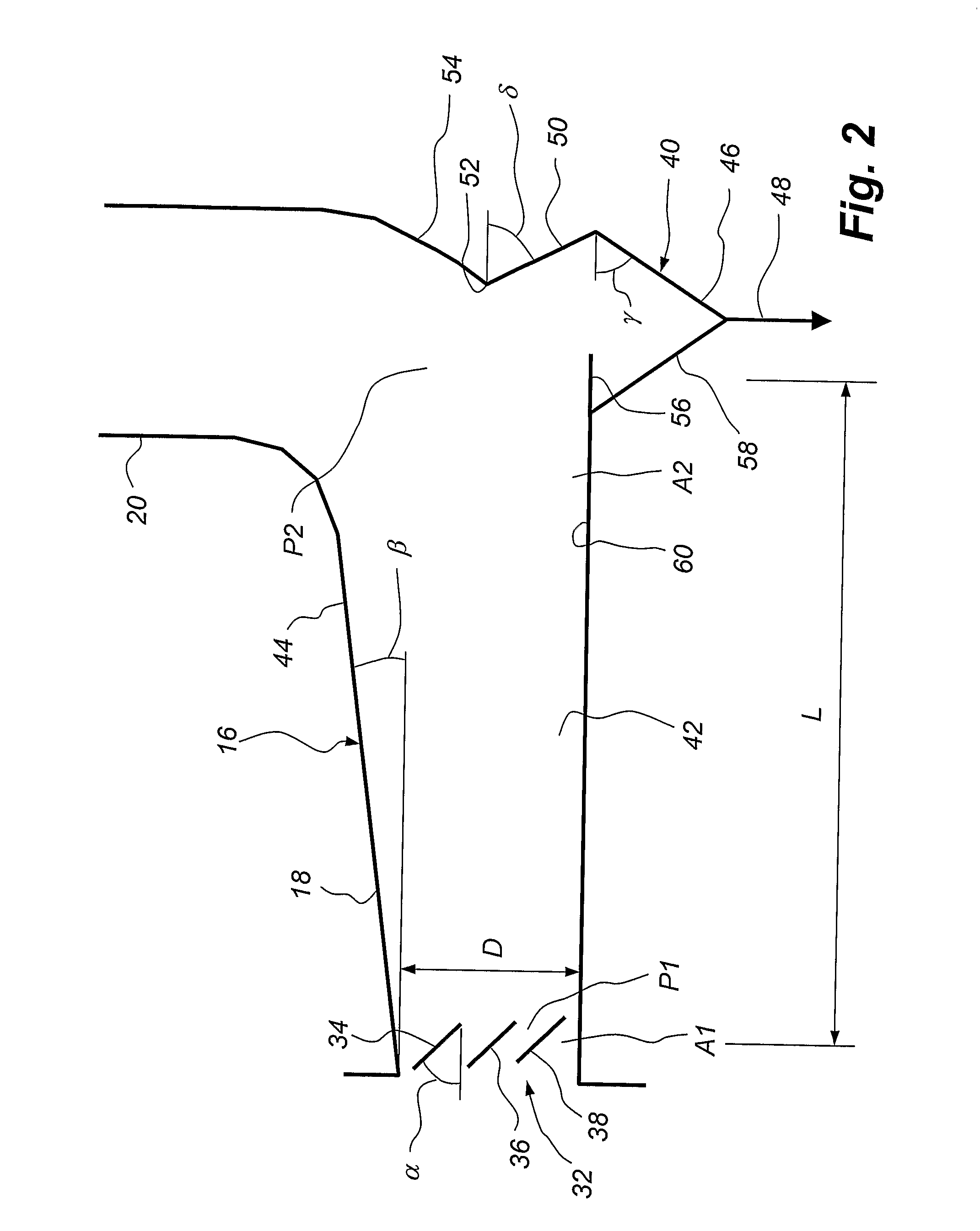Method and Device for the Separation of Dust Particles
a technology of dust particles and separation methods, applied in separation processes, filtration separation, lighting and heating apparatus, etc., can solve the problem of so great deflection
- Summary
- Abstract
- Description
- Claims
- Application Information
AI Technical Summary
Benefits of technology
Problems solved by technology
Method used
Image
Examples
Embodiment Construction
[0030]FIG. 1 shows a power station 1. The power station 1 has a boiler 2, in which a fuel, such as coal, oil or waste, is burnt by being contacted with supplied air. The flue gases F and the particles formed in the burning are passed through a duct 4 to a flue gas cooler, also referred to as an economiser, 6. In the flue gas cooler 6 heat is extracted from the flue gases as they are being passed vertically downwards through a package of tubes 8 and there being brought into indirect contact with the feed water of the boiler 2. The flue gas cooler 6 has in its lower portion 10 a dust hopper 12 which collects some coarse particles. A discharge device 14 is used to remove such collected coarse particles. In the lower portion 10 of the flue gas cooler 6, the flue gases change from a vertical direction of flow to a horizontal direction of flow and are passed into a device 16 according to the invention.
[0031] The device 16 has a horizontal flue gas duct 18, which passes the flue gases in ...
PUM
| Property | Measurement | Unit |
|---|---|---|
| angle | aaaaa | aaaaa |
| angle | aaaaa | aaaaa |
| angle | aaaaa | aaaaa |
Abstract
Description
Claims
Application Information
 Login to View More
Login to View More - R&D
- Intellectual Property
- Life Sciences
- Materials
- Tech Scout
- Unparalleled Data Quality
- Higher Quality Content
- 60% Fewer Hallucinations
Browse by: Latest US Patents, China's latest patents, Technical Efficacy Thesaurus, Application Domain, Technology Topic, Popular Technical Reports.
© 2025 PatSnap. All rights reserved.Legal|Privacy policy|Modern Slavery Act Transparency Statement|Sitemap|About US| Contact US: help@patsnap.com



